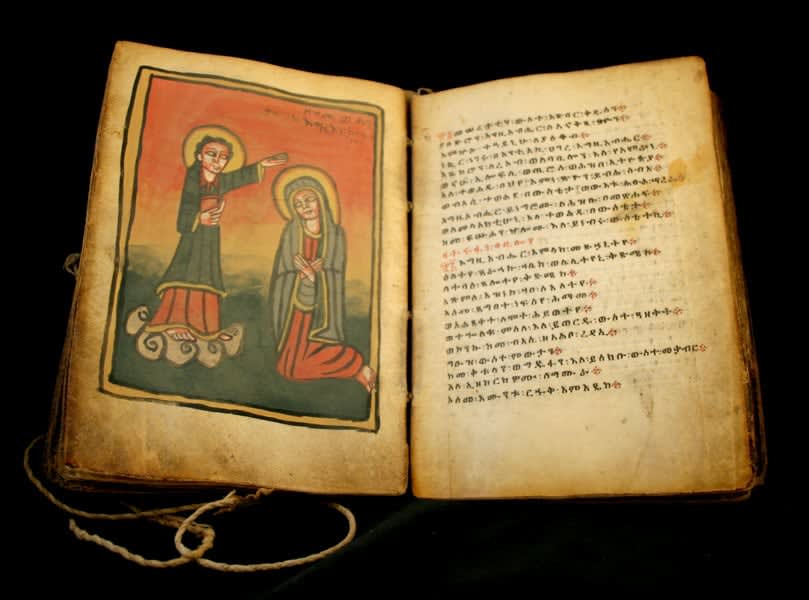Ethiopian Illuminated Prayer Book, 16th Century CE - 18th Century CE
Parchment, Wood
6 x 8.25
CK.0072
The Christian roots of Ethiopia can be traced back to the 4th century A.D. The conversion of Aksumite emperor Ezana is chronicled in multiple ecclesiastical histories, which relate that the...
The Christian roots of Ethiopia can be traced back to the 4th century A.D. The conversion of Aksumite emperor Ezana is chronicled in multiple ecclesiastical histories, which relate that the religion was introduced into the Horn of Africa by Roman merchants. Ezana’s conversion was most likely a result of his desire to solidify economic links with Rome. However, the establishment of the church also surely helped to unify the diverse ethnic communities under Aksumite authority. Christianity flourished in Ethiopia even after the fall of the Aksum empire, and over time, a distinctive artistic style develop that, while influenced by Byzantine and Orthodox examples, was uniquely Ethiopian. By the time this illuminated prayer book was created, the capital of Christendom in Ethiopia had relocated to the city of Gondar, following devastating incursions launched by the neighboring Islamic state of Adal. In Gondar, the traditional arts of ecclesiastical architecture, icon painting, and manuscript illumination all flourished under the royal patronage.
This complete prayer book contains 264 pages in total and is bound in leather (or some other animal hide) with wooden covers on the front and back. The wooden covers have a wonderful patina (especially along the edges) resulting from many years of handling. There are 8 separate illuminated scenes in total, none of which show signs of retouching after the date of their creation. Additionally, at the bottom margin of one of the pages towards the back, there is a line drawing of an angel, rendered in a distinctly different style from the illuminations, which may or may not date from a later point. The text is written in the Ge’ez alphabet, the traditional liturgical language of the Ethiopian Orthodox church.
This complete prayer book contains 264 pages in total and is bound in leather (or some other animal hide) with wooden covers on the front and back. The wooden covers have a wonderful patina (especially along the edges) resulting from many years of handling. There are 8 separate illuminated scenes in total, none of which show signs of retouching after the date of their creation. Additionally, at the bottom margin of one of the pages towards the back, there is a line drawing of an angel, rendered in a distinctly different style from the illuminations, which may or may not date from a later point. The text is written in the Ge’ez alphabet, the traditional liturgical language of the Ethiopian Orthodox church.
